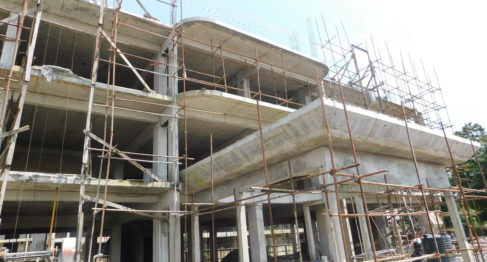Why technology adoption is low in building, construction sector ~ Prestige Real Estate News
Why technology adoption is low in building, construction sector


A president of the Nigerian Institution of Structural Engineers (NIStrustE), Dr. Victor Oyenuga, has called for improved efforts to overcome barriers impeding adoption of Building Information Modeling (BIM) technology in Nigeria’s real estate/construction sector.

He noted that the readiness of construction professionals to adopt BIM technology in construction project delivery is challenged by high initial cost, lack of awareness about BIM benefits, inadequate training, resistance to change in construction industry, culture and doubt about Return On Investment (ROI).
Other challenges, he observed, are: Lack of BIM experts, legal issues and data ownership issues, lack of standardised tools and protocols, absence of contractual requirement for BIM implementation, non-interest by sub-contractors in using BIM and lack of demand from contractors.
The BIM is used for creating and managing data during the design, construction and operations process in the building sector. BIM integrates multi-disciplinary data to create detailed digital representations that are managed in an open cloud platform for real-time collaboration.
Oyenuga, who highlighted these challenges during a lecture at 2023 Atlantic Building Exhibition (Buildmacex) in Lagos, said despite the barriers, benefits include connecting teams, workflows and data across the entire project lifecycle from design and engineering to construction as well as operations to realise better ways of working.
Although BIM started with the architectural discipline, in recent times engineering has seen greater readiness and adoption of BIM. Across the world, the United States of America stands out as one of the pioneers of BIM adoption. Also, Singapore and South Korea lead in BIM adoption in Asia. BIM adoption in the Middle East stands at below 30 per cent lower, while in Africa Nigeria is one of lowest adaptors of the technology.
“The BIM awareness and adoption in Nigerian Architecture, Engineering and Construction (AEC) is significantly low. Key players are generally not familiar with BIM, although mostly aware of its tools. Only a few use some BIM tools at organisational level and operating model-based BIM stage one,’’ he said.
According to him, benefits of BIM in the pre-construction phase are effective site analysis to understand environmental and resource-related problems, improved effectiveness, accuracy of existing conditions’ documentation and effective design reviews leading to sustainable building design.
He said: ”Using BIM gives greater visibility, better decision-making, more sustainable options and cost-savings on AEC projects. Benefits of BIM in post-construction, including helping in decision-making about operations, maintenance, repair and replacement of facility. It makes asset/facility management easier, more accurate and with more information, aids ability to schedule maintenance and access to information during building maintenance.”
Oyenuga said if BIM were deployed in construction industry, it would help in the evaluation of the construction of complex building systems to improve the planning of resources and sequencing alternatives.
In addition, he explained that it would help in the effective management of storage and procurement of project resources, efficient fabrication of various building components offsite using a design model as the basis, better site utilisation and reduce site congestion.
Meanwhile, the Standard Organisation of Nigeria (SON) has warned builders against the use of low quality construction materials during housing production.
Its Director General, Farouk Salim, who was represented by the Head of Product Registration, Joseph Ugbaja, said this at the Expo in Lagos.
He disclosed that efforts are in progress to ensure that materials used in building industry conform to established standards and regulations.
Salim argued that the present challenge in the industry requires development of economical buildings and reducing social, economic and environmental impacts.







